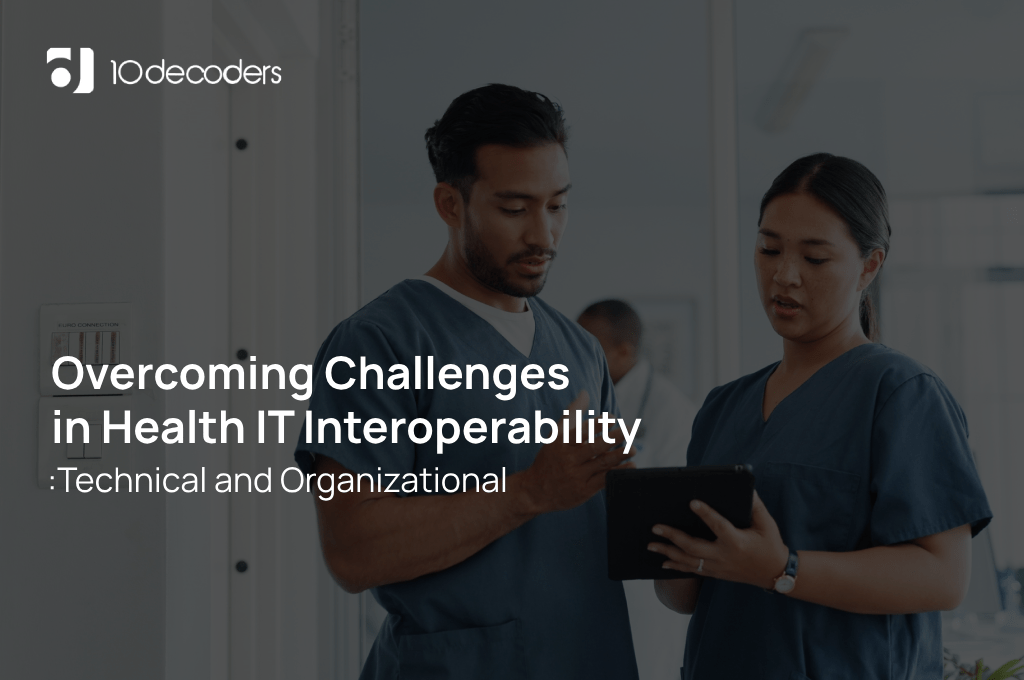Overcoming Challenges in Health IT Interoperability: Technical and Organizational
In the dynamic world of healthcare, the ability to seamlessly share and integrate electronic health information is more than a convenience—it’s a necessity. Despite the critical importance of this capability, the path to achieving interoperability in health IT is fraught with both technical and organizational obstacles. This blog delves into these challenges and offers pragmatic solutions, focusing on the goal of enhancing patient care and increasing the efficiency of healthcare systems through improved interoperability.
The Imperative of Interoperability in Health IT
Interoperability in healthcare IT extends beyond a mere technical goal. It is a key element that has the potential to transform patient care, optimize healthcare operations, and propel medical research forward. This involves the capacity of diverse IT systems and software applications to communicate, exchange data, and utilize this exchanged information in an effective manner.
Technical Challenges in Health IT Interoperability
a. Diverse Data Standards
The array of data formats and structures in healthcare often leads to compatibility issues, marking one of the main technical hurdles. Although standards like HL7, FHIR, and DICOM exist, their adoption and implementation have been uneven, presenting a significant barrier to interoperability.
b. Legacy Systems and Integration
Many healthcare providers still rely on outdated legacy systems, which are not inherently designed for interoperability. Merging these systems with modern technologies typically demands substantial investment and a complete technical revamp.
c. Data Security and Privacy
Ensuring the security and privacy of health data during exchange is critical. Meeting regulations like the US’s HIPAA or Europe’s GDPR, while also achieving interoperability, poses a considerable technical challenge.
Organizational Challenges in Achieving Interoperability
a. Resistance to Change
A common hurdle within healthcare institutions is the internal resistance to change. Transitioning from familiar systems to new, interoperable solutions entails overcoming various cultural and behavioral barriers within organizations.
b. Financial Constraints
The transition to interoperable health IT systems involves significant costs. Smaller healthcare providers, in particular, may find the financial requirements of adopting new technologies and training staff daunting.
c. Governance and Policy Alignment
Divergent governance and policy standards at various levels can hinder interoperability. Streamlining these policies to enable smooth health data exchange is an intricate process.
Solutions for Technical Challenges
a. Adopting Universal Data Standards
Promoting and implementing universal data standards like FHIR can facilitate more efficient data exchange. It’s important that these standards remain flexible to accommodate new technological developments.
b. Embracing API-Driven Ecosystems
APIs (Application Programming Interfaces) can bridge the gap between older and newer technologies, enabling different systems and applications to interact more effectively.
c. Implementing Robust Security Protocols
The development and consistent updating of advanced security protocols are essential to maintain data privacy while supporting interoperability.
Addressing Organizational Challenges
a. Cultivating a Culture of Innovation
Creating an environment that supports change and innovation is vital. Leadership commitment, comprehensive staff training, and emphasizing the long-term benefits of interoperability are key to this effort.
b. Exploring Funding and Collaborative Models
Alternative funding avenues, such as government grants or partnerships, can help alleviate financial burdens. Collaboration among healthcare providers and resource sharing can also offer cost-effective solutions.
c. Advocating for Uniform Policies
Working towards policy alignment and standardization across different regions can greatly enhance efforts towards interoperability.
The Future of Health IT Interoperability
Emerging technologies like AI, machine learning, and blockchain have the potential to significantly advance health IT interoperability. AI and machine learning can assist in the predictive analysis of health data, while blockchain provides a secure and transparent method for managing health records. The future hinges on integrating these technologies with user-centric design and policy reform, leading to a healthcare system that is more cohesive, efficient, and focused on patient care.
Realizing the goal of interoperability in health IT is a multi-dimensional challenge that requires addressing both technical and organizational issues. Through the adoption of universal standards, the integration of cutting-edge technologies, the promotion of an innovative culture, and policy alignment, the healthcare sector can surmount these obstacles. The journey towards comprehensive interoperability is intricate and ongoing, but its potential to enhance patient care, improve operational efficiency, and drive medical progress underscores its critical importance in the evolving landscape of healthcare.



